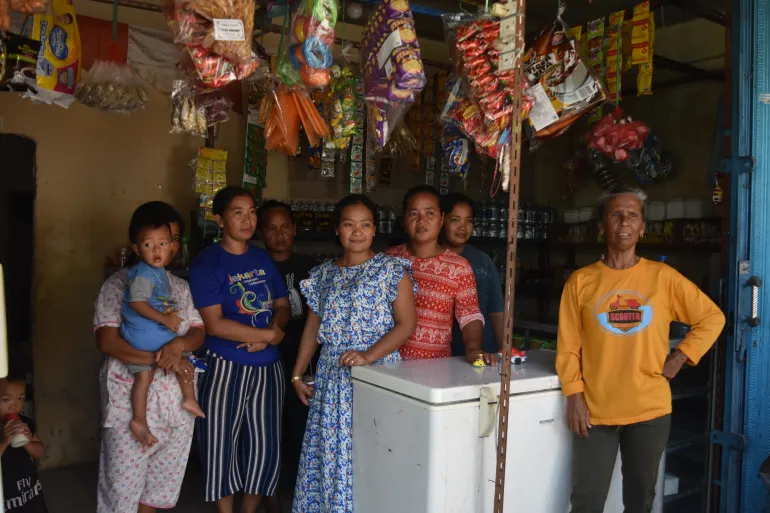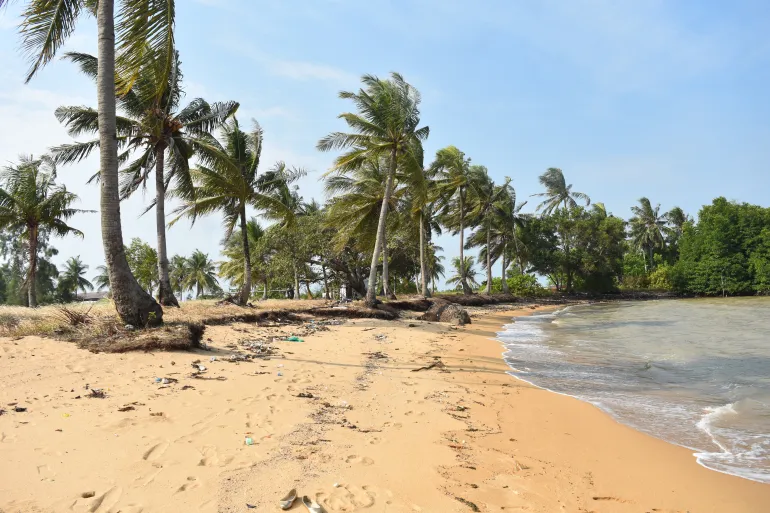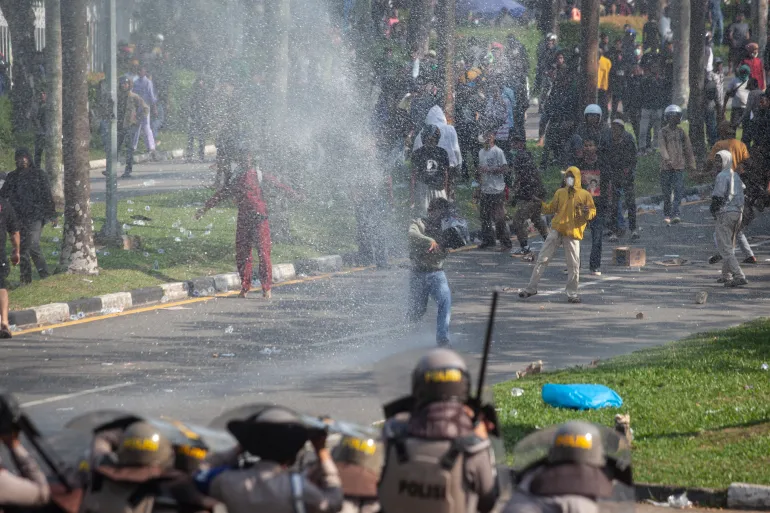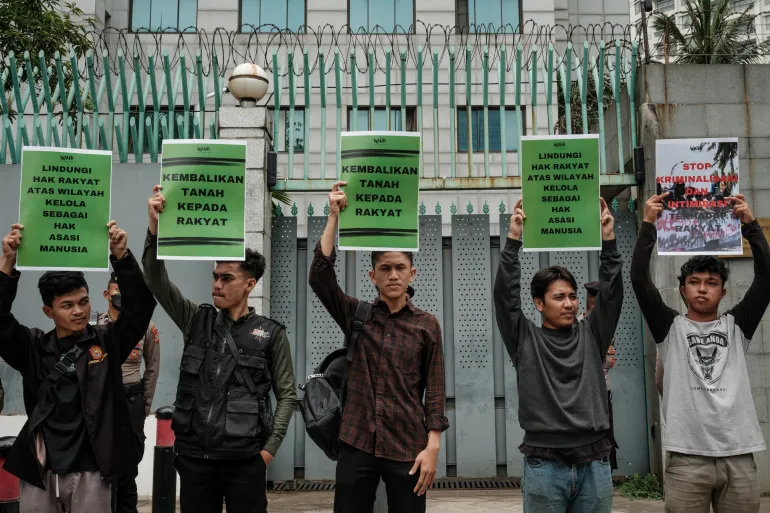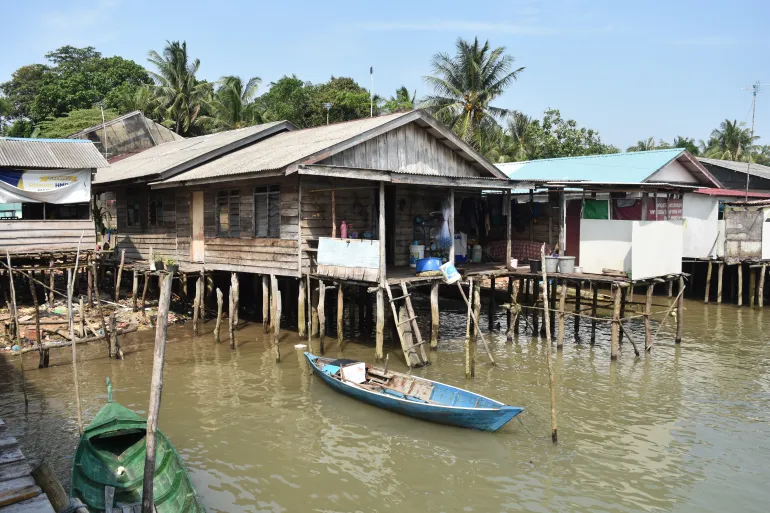News
A China deal put thousands of Indonesian homes at risk
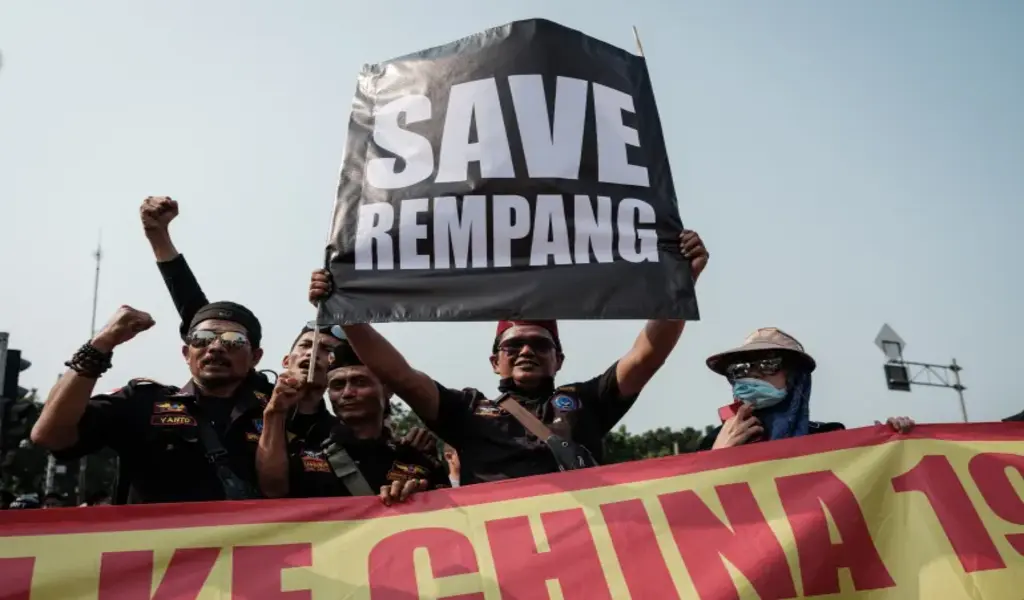
(CTN News) – Some 7,500 residents of the Indonesian island of Rempang have been given until September 28 to vacate their homes to make way for a massive Eco City, the centerpiece of which will be a glass factory owned by a Chinese conglomerate.
Locals are wary of claims that the project will bring in $26.6 billion and create 35,000 employees by 2080, as made by Indonesia’s Investment Minister Bahlil Lahadalia.
Due to the development, they fear losing their cultural identity if they are forced to relocate from their historic fishing village.
Islanders opposed to the plan have battled with local authorities on Rempang and neighboring islands, including Batam, in recent weeks.
Everything you want to know about the contentious project is right here.
What is the project?
Rempang Eco-City is a collaboration between the Batam Indonesia Free Zone Authority (BP Batam), the local Indonesian enterprise PT Makmur Elok Graha (MEG), and the world’s largest producer of glass and solar panels, China’s Xinyi Glass.
The factory will be built with a $11.6 billion contribution from Xinyi Glass.
When finished, the facility will be the world’s second-largest of its sort.
The larger Eco-City project is intended to build industrial, service, and tourism zones on Rempang Island and will occupy around 17,000 hectares (42,000 acres).
How did Xinyi Glass get involved?
Indonesian President Joko Widodo, also known as Jokowi, visited China in July to meet with Chinese President Xi Jinping to discuss potential areas of cooperation in health, education, language, and investment.
During his two-day visit, Jokowi also addressed investment in Indonesia’s new capital city in East Kalimantan and the development of Rempang Island, both of which are considered to be of paramount importance.
Jokowi said that the Indonesian government had prepared some 34,000 hectares (84,000 acres) of land in the new capital city for Chinese investment during a meeting with the Indonesian Chamber of Commerce in China at the Shangri-La Hotel in Chengdu on July 27.
The next day, Jokowi was part of a delegation that saw the signing of various collaboration documents related to the growth of Rempang’s glass and solar panel industries.
The president was joined by Minister of Investment Bahlil Lahadalia, Minister of Foreign Affairs Retno Marsudi, Minister of Human Development and Cultural Affairs Muhadjir Effendy, Minister of Maritime and Investment Affairs Luhut Binsar Pandjaitan, and Indonesia’s Ambassador to China Djauhari Oratmangun.
Defence Minister Prabowo Subianto, who has traditionally taken a hard position on foreign investment in Indonesia, particularly in relation to China, was conspicuously absent from the meeting, according to some observers.
One could speculate as to the thoughts of Indonesia’s defence establishment on this project, given the strategic ramifications and close proximity to Singapore and Malaysia.
To what extent, for instance, did Prabowo and the Ministry of Defence participate in the planning of this endeavour? Murdoch University in Australia’s Indo-Pacific Research Centre fellow Jacqui Baker remarked.
Getting to Batam from Singapore takes less than an hour on the ferry. Earlier this month, it played host to the first-ever joint military drills by the Association of Southeast Asian Nations (ASEAN).
Baker chimed in, noting that while Prabowo “is currently running as a presidential candidate and actively seeking the presidential endorsement,” his “classic stump speech” is ultra-nationalistic, focusing on how major forces are trying to undercut Indonesia and its people.
Why does Indonesia want to secure investment from China?
More than $133 billion was traded between the two countries in 2022, making China Indonesia’s largest trading partner, surpassing Singapore, Japan, and the United States combined.
Xi Jinping’s Belt and Road Initiative, a worldwide program to improve transportation and communication networks, has brought hundreds of infrastructure projects to the archipelago during the past decade.
With the goal of increasing Indonesia’s gross domestic product (GDP) per capita to $25,000 by 2045, Indonesia’s president has also unveiled a number of other ambitious development projects and goals around the country.
That’s why nobody should have been surprised by the agreement with Xinyi Glass.
According to senior research fellow at Ritsumeikan University in Kyoto, Japan, Trissia Wijaya, “with China, it is easier and more efficient to secure investment because Chinese state-owned enterprises (SEOs) dare to inject capital into Indonesia.” Wijaya made these comments to Al Jazeera.
“In China, the players are Chinese state-owned corporations who have the guts to increase their debt-to-equity ratio to unprecedented levels. Private businesses in Japan and Taiwan place a premium on efficiency.
Jokowi’s pragmatic attitude to ‘getting things done’ clashes with the geo-strategic mindset of American corporations.
According to Wijaya, there is “no reason” for Indonesia to be against a project like Rempang.
What is a National Strategic Project?
The official paperwork naming Rempang Eco City a “National Strategic Project” date back to August 28, after Jokowi’s meeting in China.
Railways, ports, roads, and airports, as well as industrial development zones, are all on the government’s agenda for growth in Indonesia in an effort to boost the country’s productivity and global competitiveness.
The high-speed railway between Jakarta and Bandung, backed by China, is one of 245 projects designated as National Strategic Projects.
Since the president is responsible for these sorts of endeavours, the government has the right to forcibly acquire land for their development, even if it means displacing current people.
As stated on their website, “An infrastructure development project will be a National Strategic Project with the consideration that the project is considered strategic and important to be completed in a short time and has a goal to increase growth and equitable development in order to improve the welfare of society and regional development.”
How did the Xinyi Glass deal change everything?
According to Al Jazeera’s interviews with local Batam officials, the new glass factory and Eco-City that the government is pushing through instead of the original plan for Rempang are two very different things.
To focus on the tourism industry, the regional government of Batam signed an MoU with PT MEG in 2004 to develop no more than 5,000 hectares (12,300 acres) of Rempang Island, according to Taba Iskander, who was the head of Batam’s Regional People’s Legislative Council at the time. Al Jazeera reported this.
Five years and a temporary location on the island were allocated to PT MEG to prepare the Rempang area. But PT MEG hasn’t done any work or development there since 2022,” he stated.
According to the 2004 agreement, a copy of which was obtained by Al Jazeera, “old villages and cultural heritage of Rempang would be maintained and preserved.”
Iskander claims that this promise was broken when Rempang was designated as a National Strategic Project, and he calls the most recent proposals “very different” from the original plans.
“The current project wants to relocate the old villages and the Malay community on Rempang Island,” he explained.
Why Rempang Island?
The position of Rempang Island is crucial.
It is surrounded by several smaller local islands, and it is near to both Malaysia and Singapore.
According to Boy Sembiring, president of the Indonesian Forum for Environment in Riau, it was likely picked for these reasons.
“Rempang is surrounded by small islands and sea which contains silica sand and quartz sand which are raw materials for making glass and solar panels,” he explained.
He also noted that there will be severe consequences for the planet due to this.
Devastating erosion has already occurred in other sections of the Riau Islands Province, such as Karimun, where sand has been mined for shipment to Singapore.
Rempang and the nearby islands are in danger because of the glass industry. Sembiring warns that if the corporation becomes very active, “many mining sites will likely be developed on neighbouring islands, threatening the fishing areas of local fishers and the safety of those small islands.”
How do the locals feel?
Residents, many of whom have lived on Rempang for generations, were told just at the beginning of the month that they would need to abandon their homes by September 28.
Many have informed Al Jazeera that they do not want to leave.
Some have joined major protests against the proposal, facing police tear gas and water cannons.
The government has claimed it will offer them with new residences in Batam valued at $7,800 with a land size of 500 square metres (5,382 sq ft).
But whilst the buildings remain under construction, the family will first have to move to temporary accommodation (the government will pay their rent).
Nor, a snack seller at a local school on Rempang Island, has lived there for 50 years and said she was terrified of the transfer plans.
She wants the president to intervene. Jokowi promised back in 2019, as he campaigned for a second term in government, to get the Rempang residents’ official land ownership documents.
To Jokowi, I would beg, “Please Sir, defend our soil. If this were your house, how would you feel? Nor pleaded, “Please consider our children before constructing the factory here.
“We’d rather stay put.”

